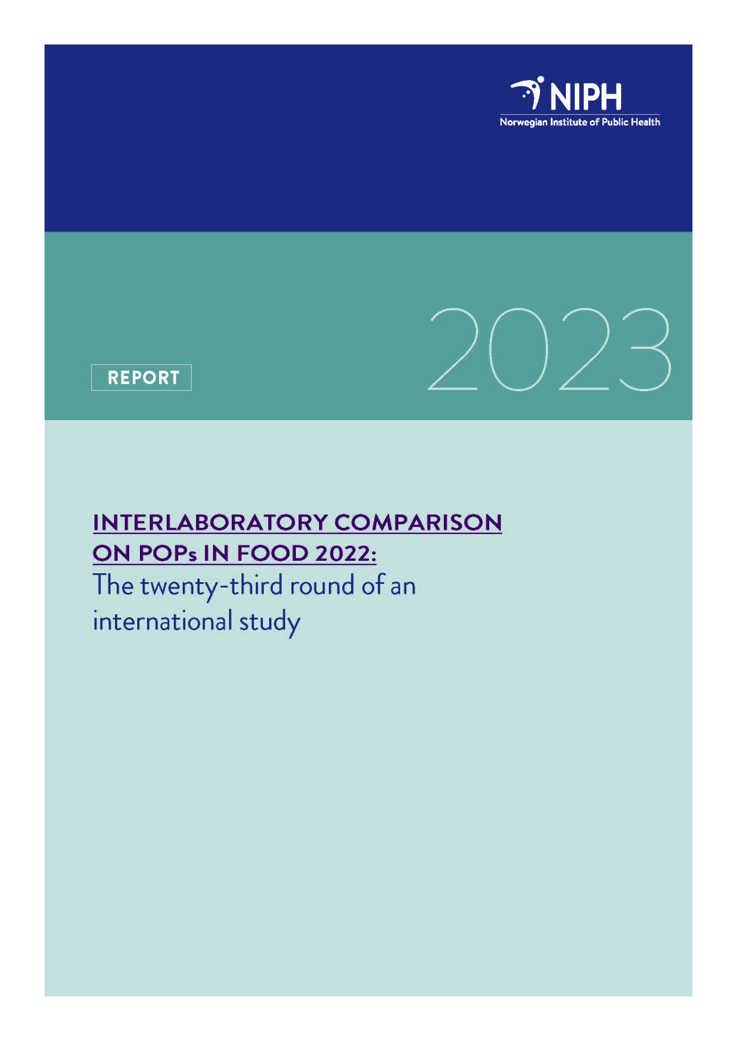Interlaboratory Comparison on POPs in Food 2022
Rapport
|Publisert
The 23. round of the Interlaboratory Comparison on POPs in Food was conducted in 2022 by the Norwegian Institute of Public Health (NIPH).
Sammendrag
The 23rd round of the Interlaboratory Comparison on POPs in Food was conducted in 2022 by the Norwegian Institute of Public Health (NIPH). The study included the determination of the 2,3,7,8-chlorinated dibenzo-p-dioxins (PCDDs) and dibenzofurans (PCDFs), as well as dioxin-like non-ortho and mono-ortho chlorinated biphenyls (PCBs) in three different food items. Additionally, the participating laboratories could determine the concentrations of six indicator PCBs, polybrominated diphenyl ethers (PBDEs) and hexabromocyclododecanes (HBCDs) in the same food samples.
A fourth matrix was also accessible to the participants, designated for the determination of the following poly- and perfluoroalkyl substances (PFASs): Perfluorooctanesulfonate (PFOS), perfluorohexanesulfonate (PFHxS), perfluorooctanoate (PFOA), perfluorononanoate (PFNA), perfluorodecanoate (PFDA) and perfluoroundecanoate (PFUnDA).
The objectives of this interlaboratory comparison study were:
A. To offer a tool for quality assurance to the participating laboratories
B. To assess the between laboratory reproducibility
C. To assess the readiness of expert laboratories worldwide to determine levels of
chlorinated and brominated persistent organic pollutants, as well as for PFASs, in
regular foodstuffs


